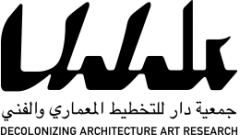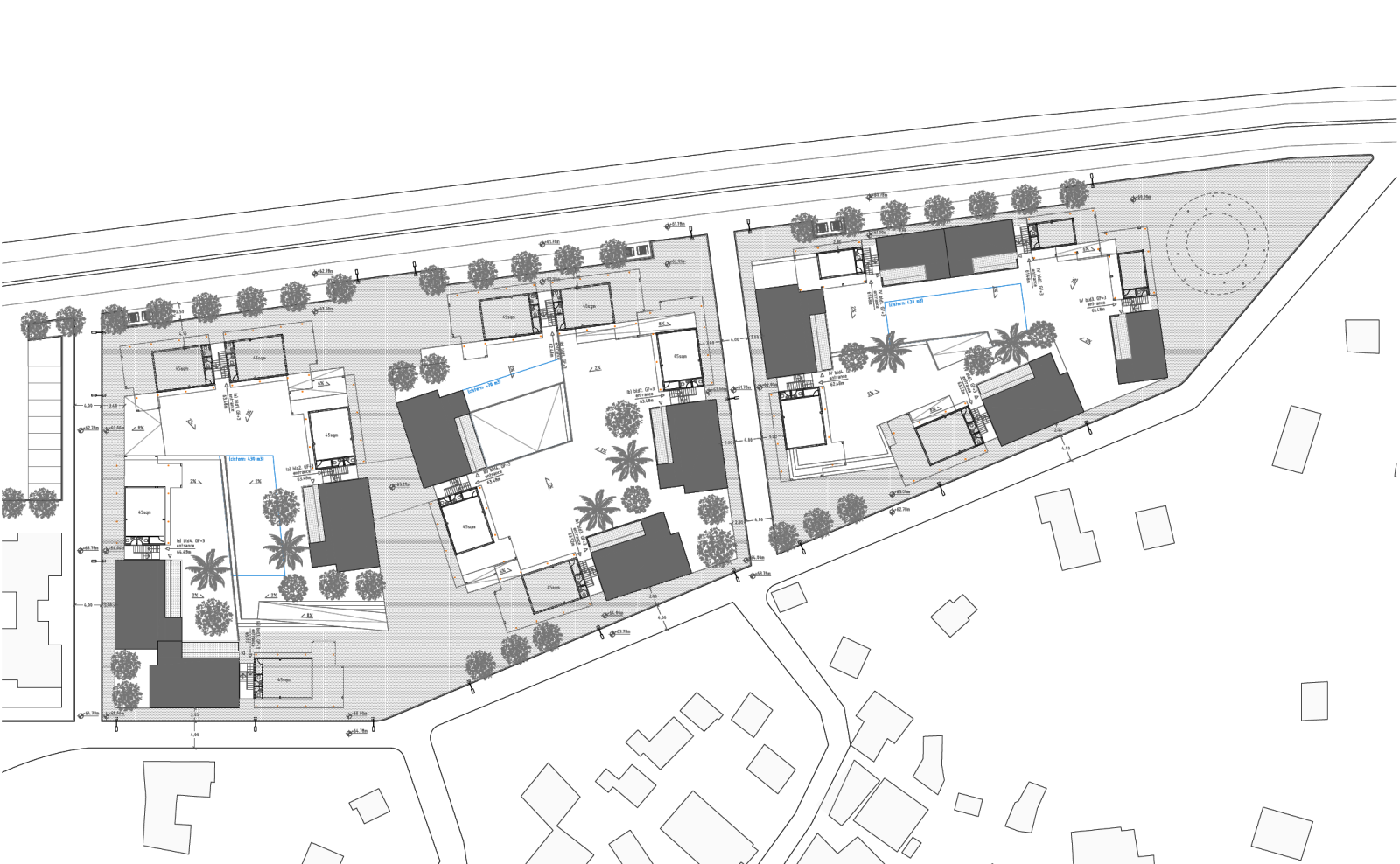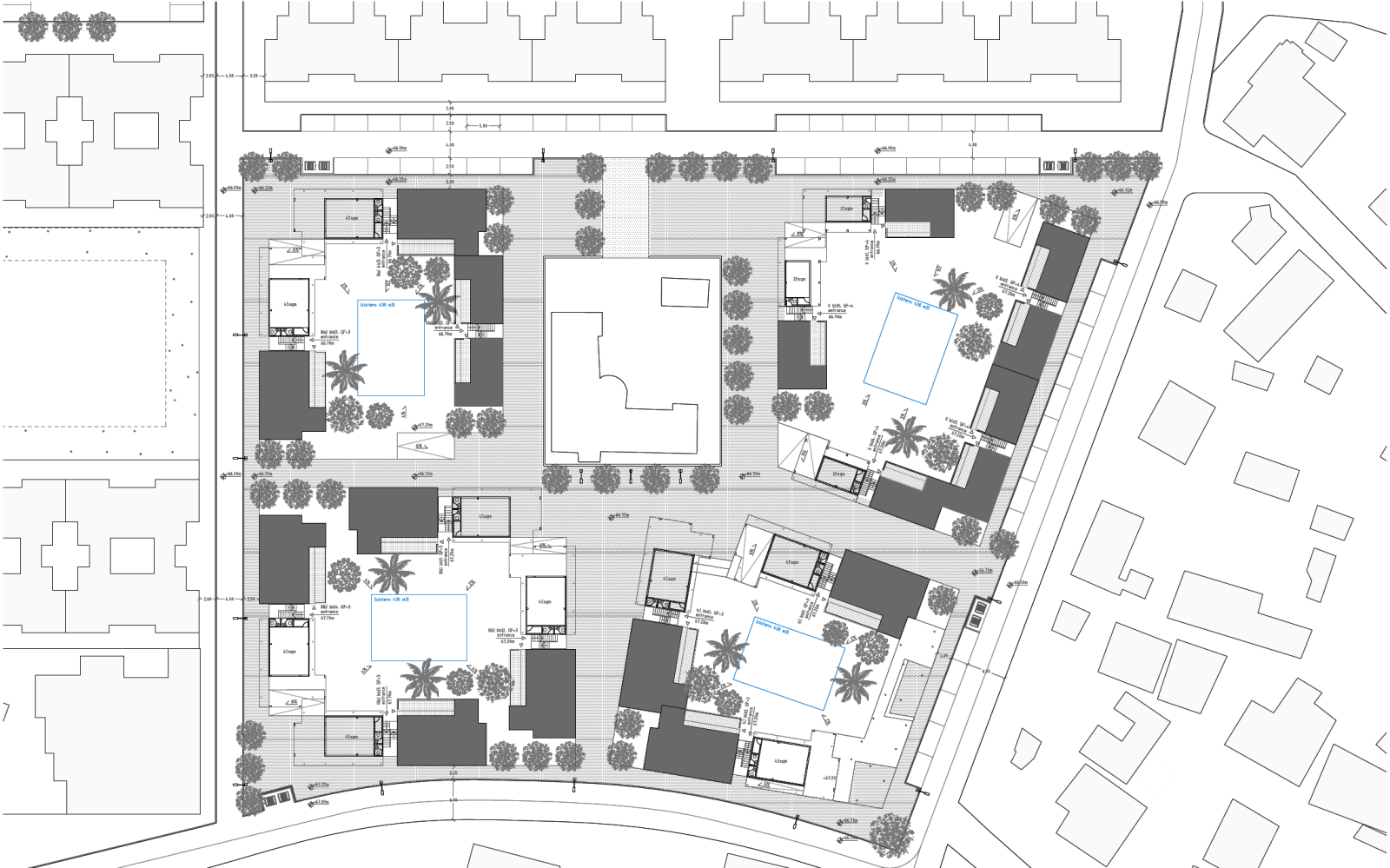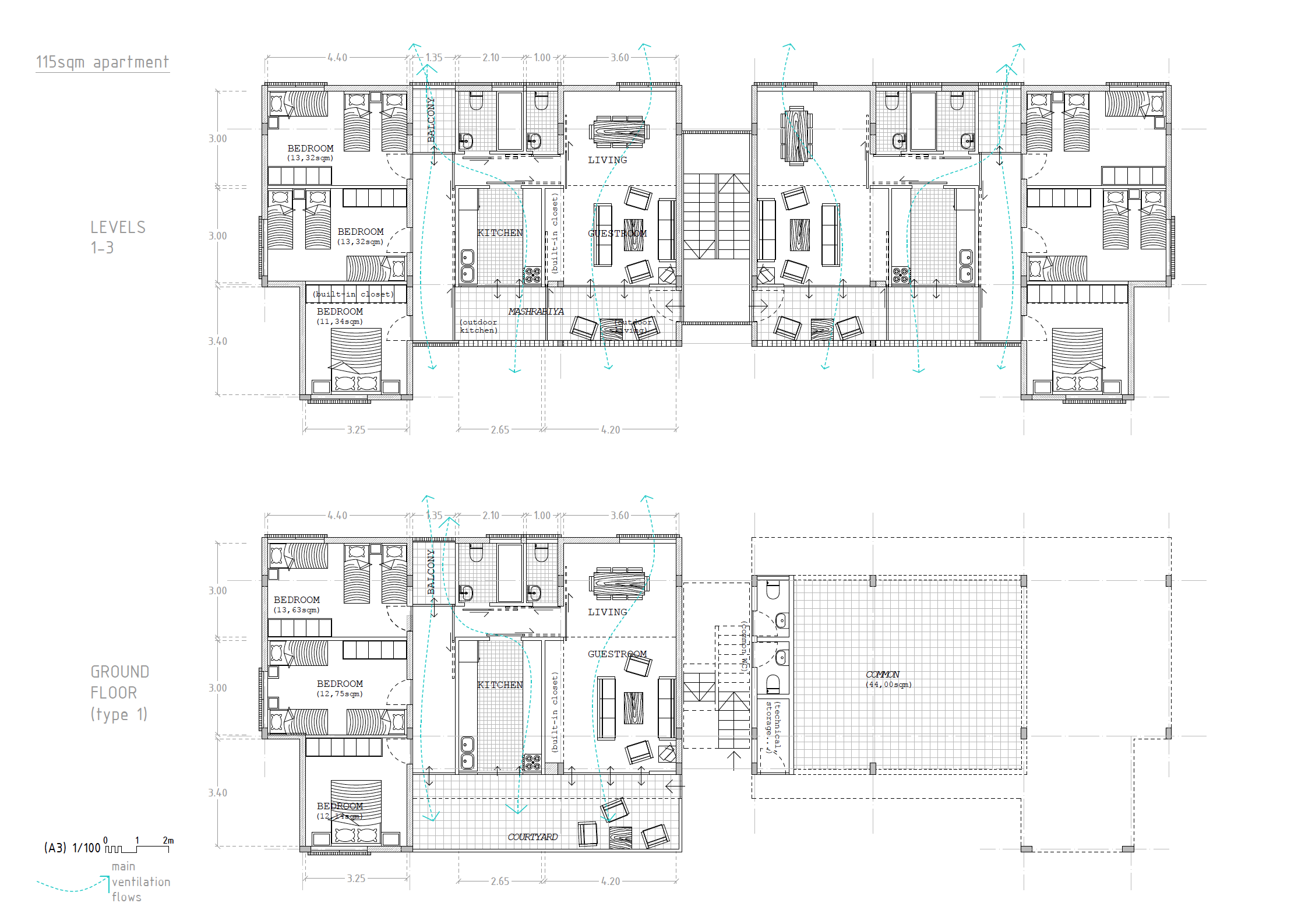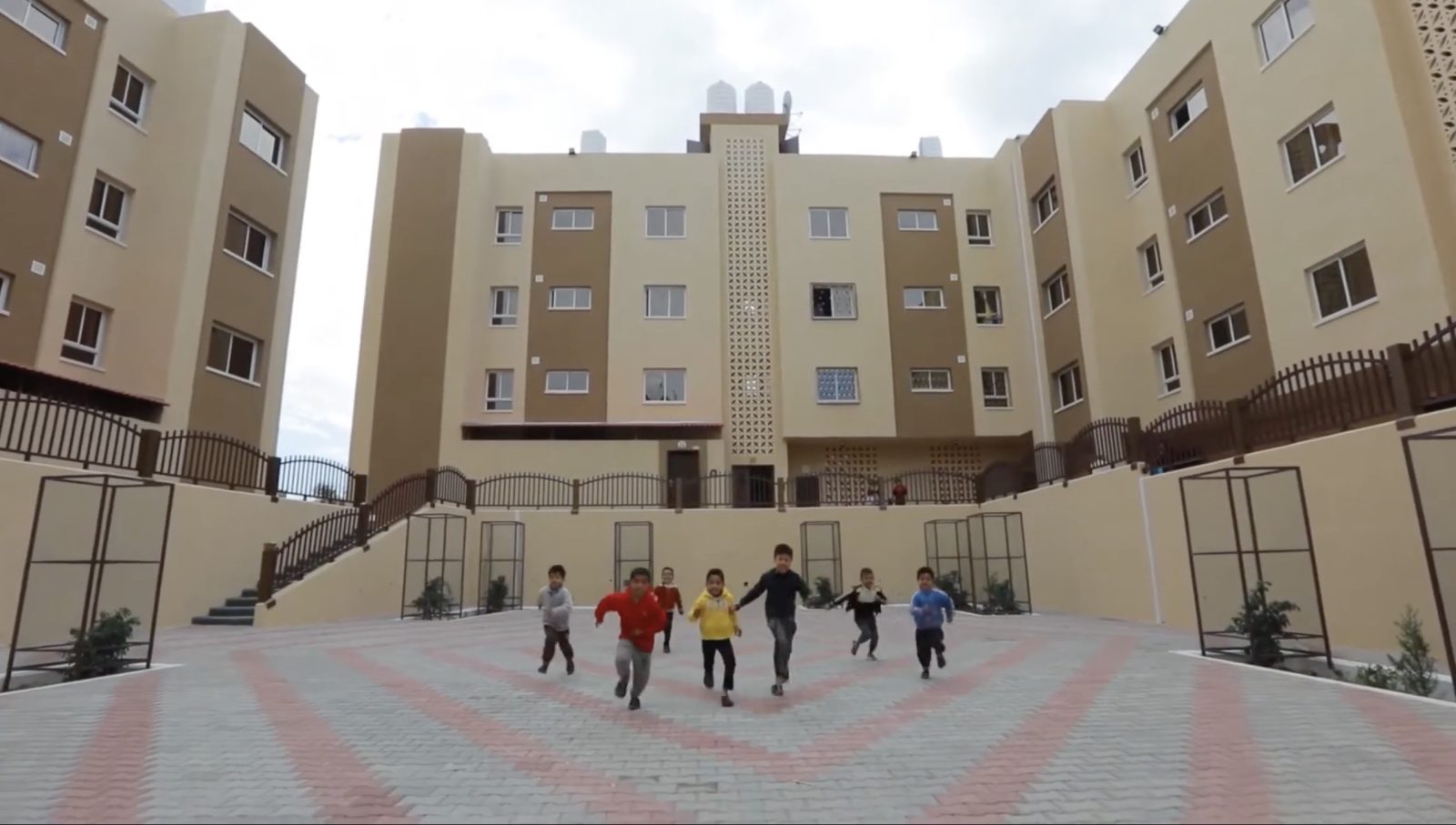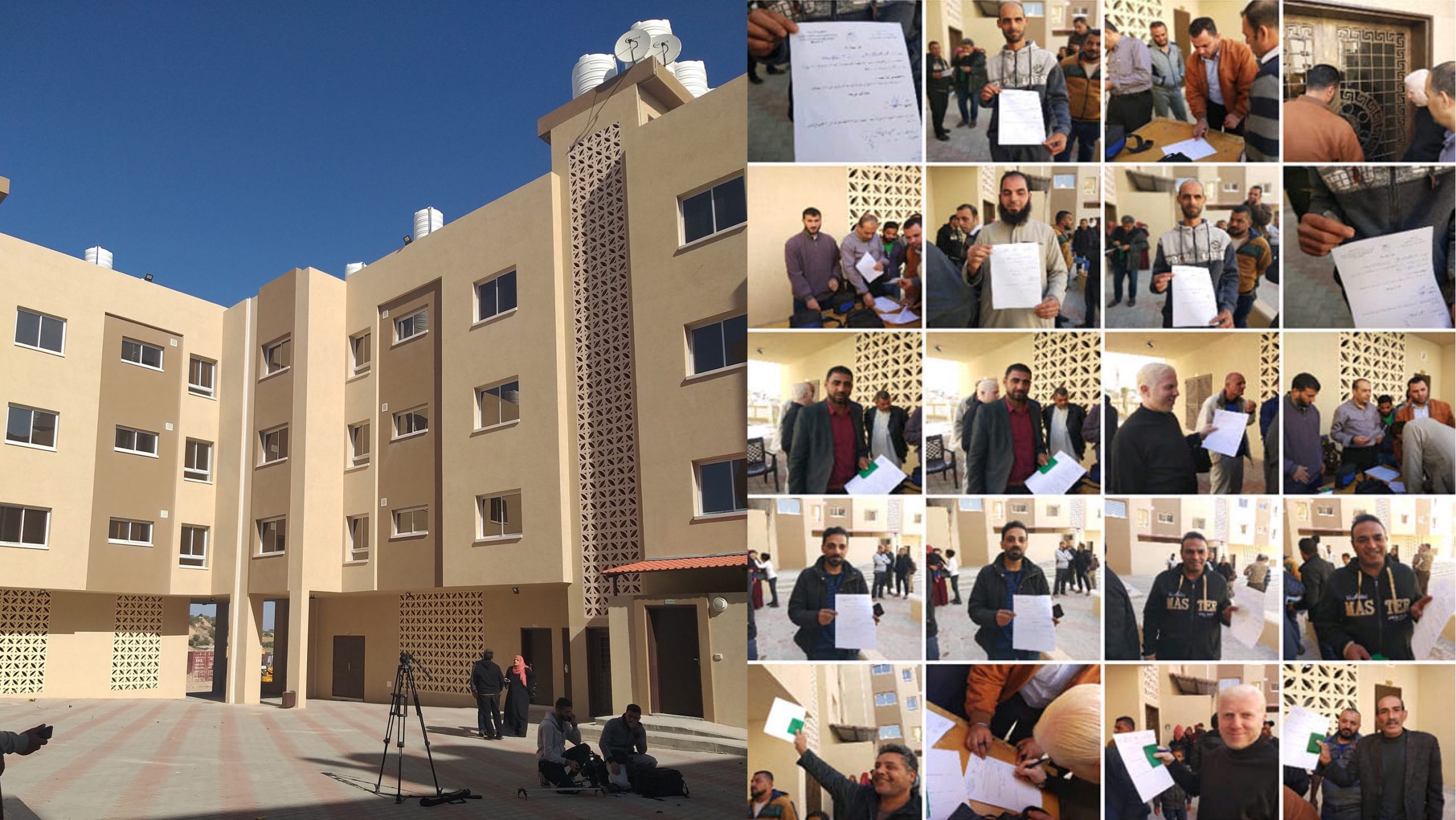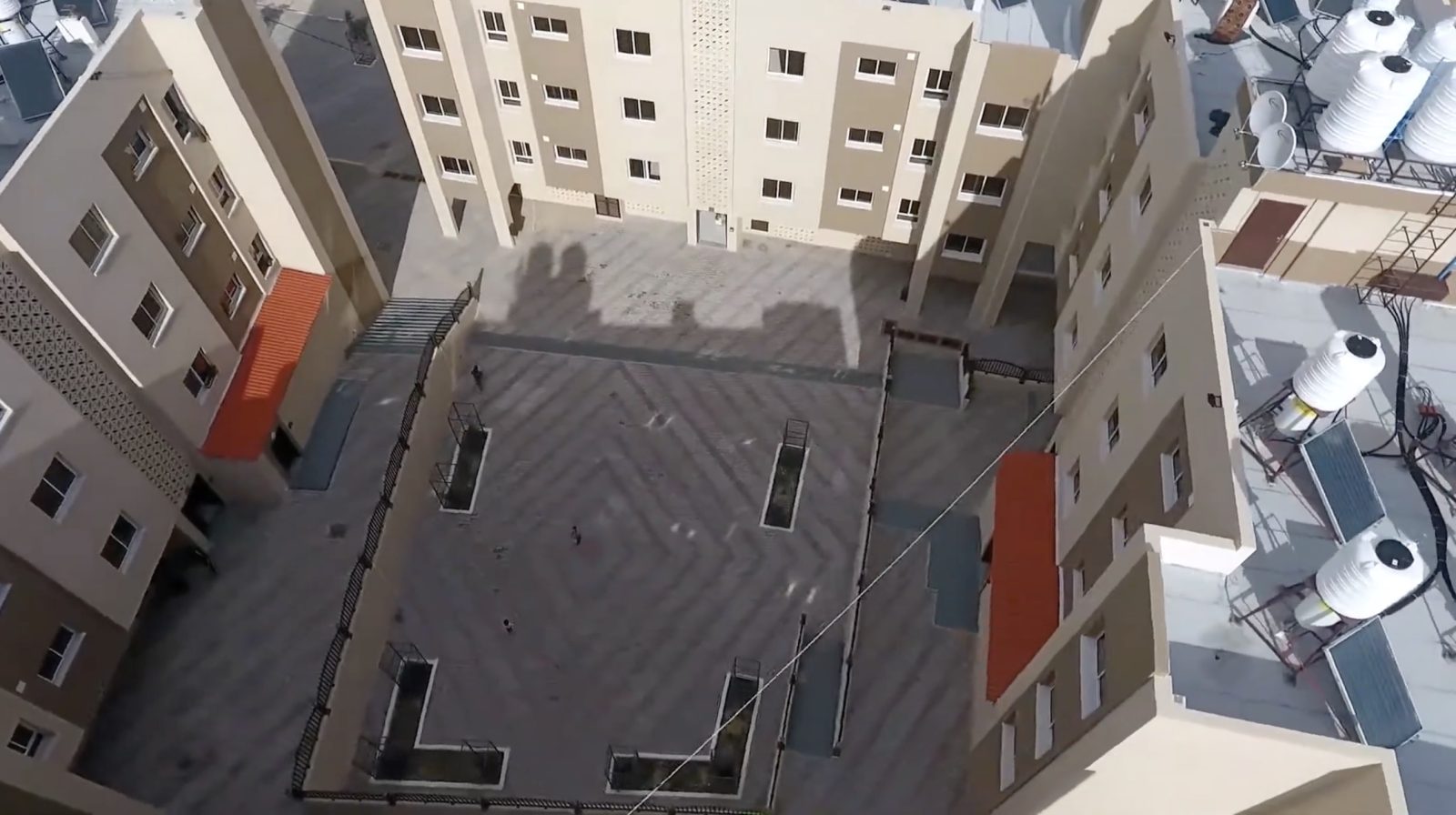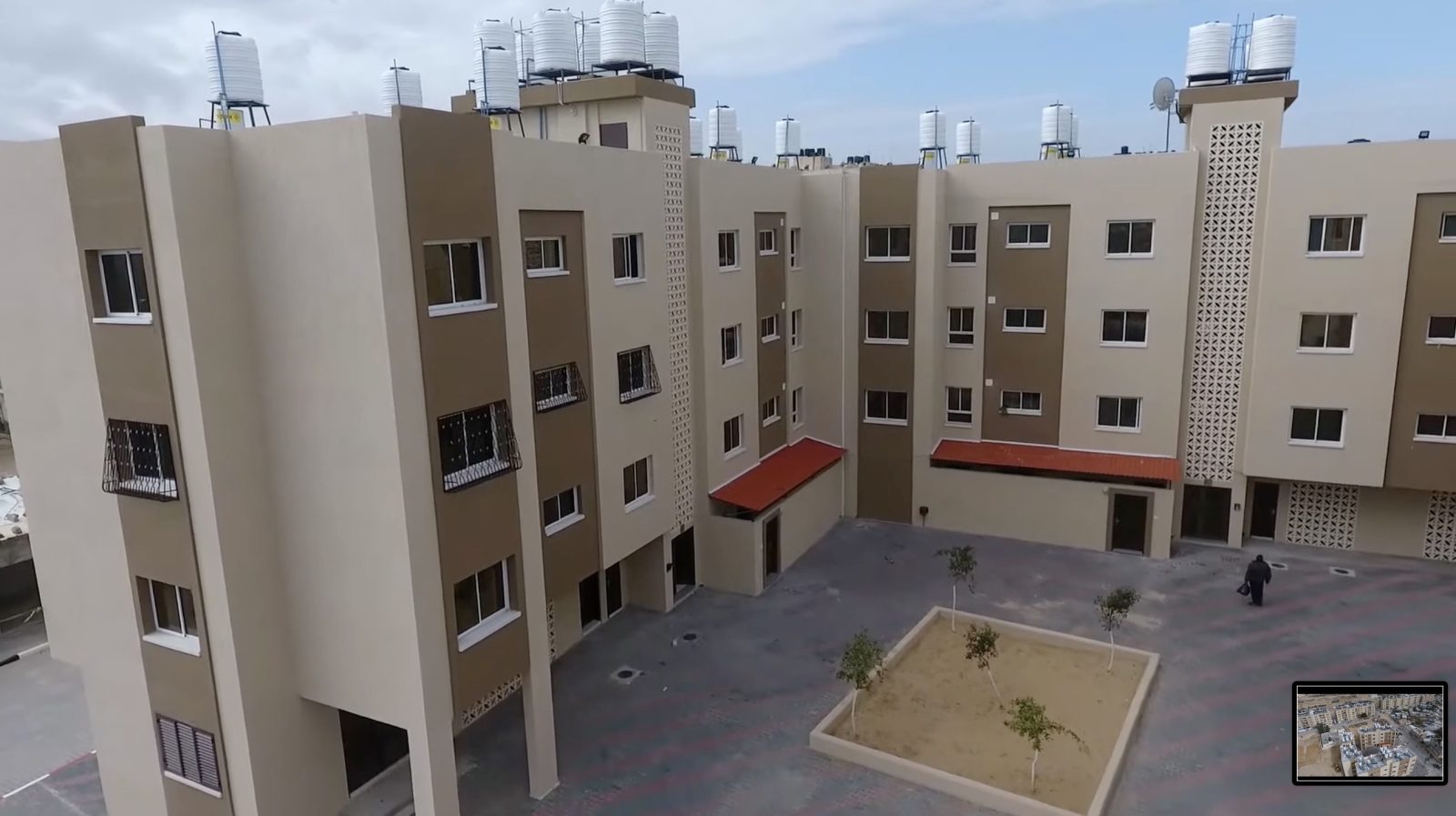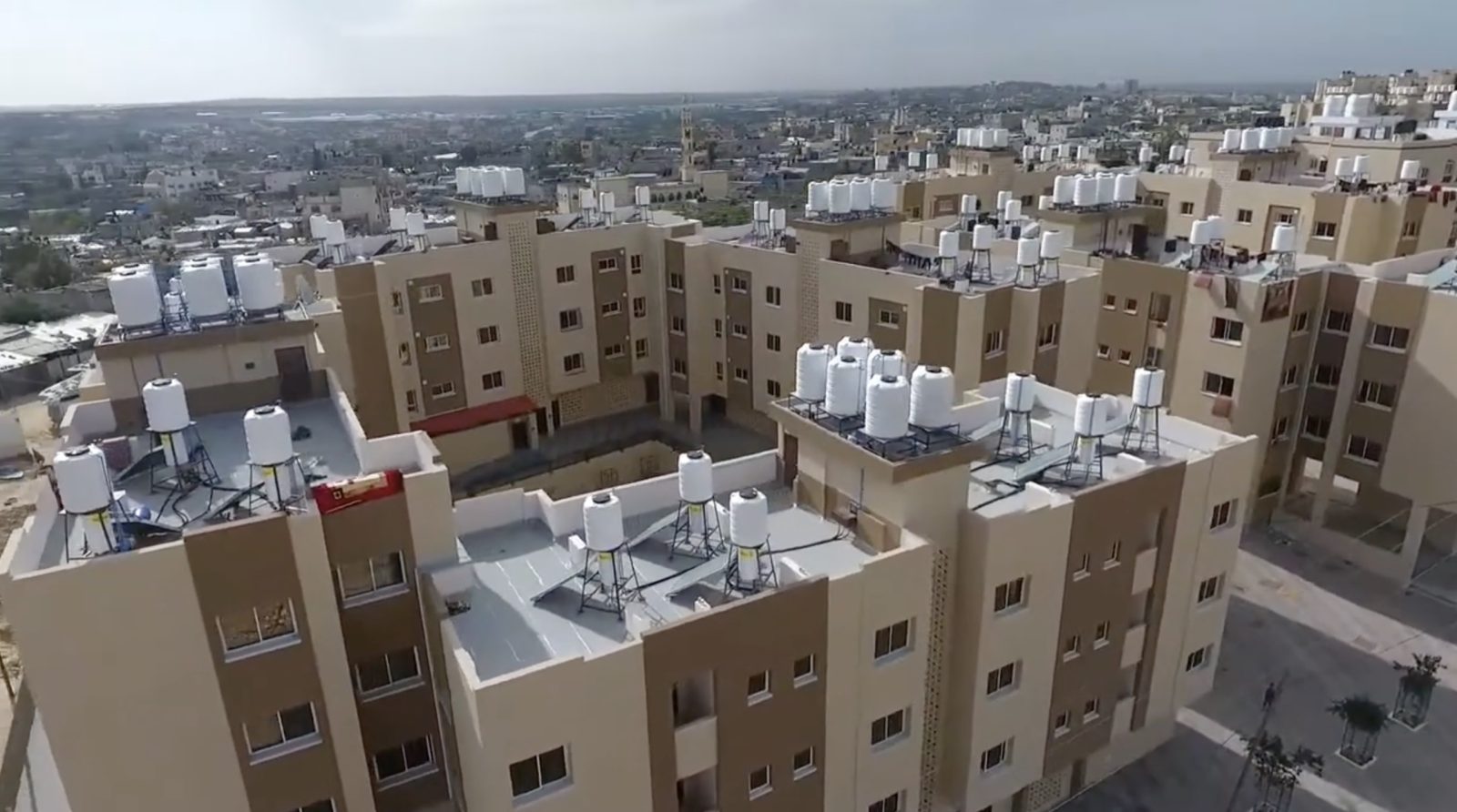In 2016, DAAR and Studioazue were commissioned by the Italian Agency for Development and Cooperation to produce a reconstruction plan for Al Nada Neighborhood in close collaboration with the technical team of the Ministry of Public Works and Housing in Gaza. The project’s objective was to rehabilitate the 386 residential units that were partially damaged during the wars, construct 207 additional housing units, and regenerate urban infrastructures and open spaces. The preparation of the community-based master plan involved the Al Nada and Al Isba Neighborhood Committee, the Beit Hanoun Municipality, the Joint Service Council for the Northern Area, local families, and individuals.
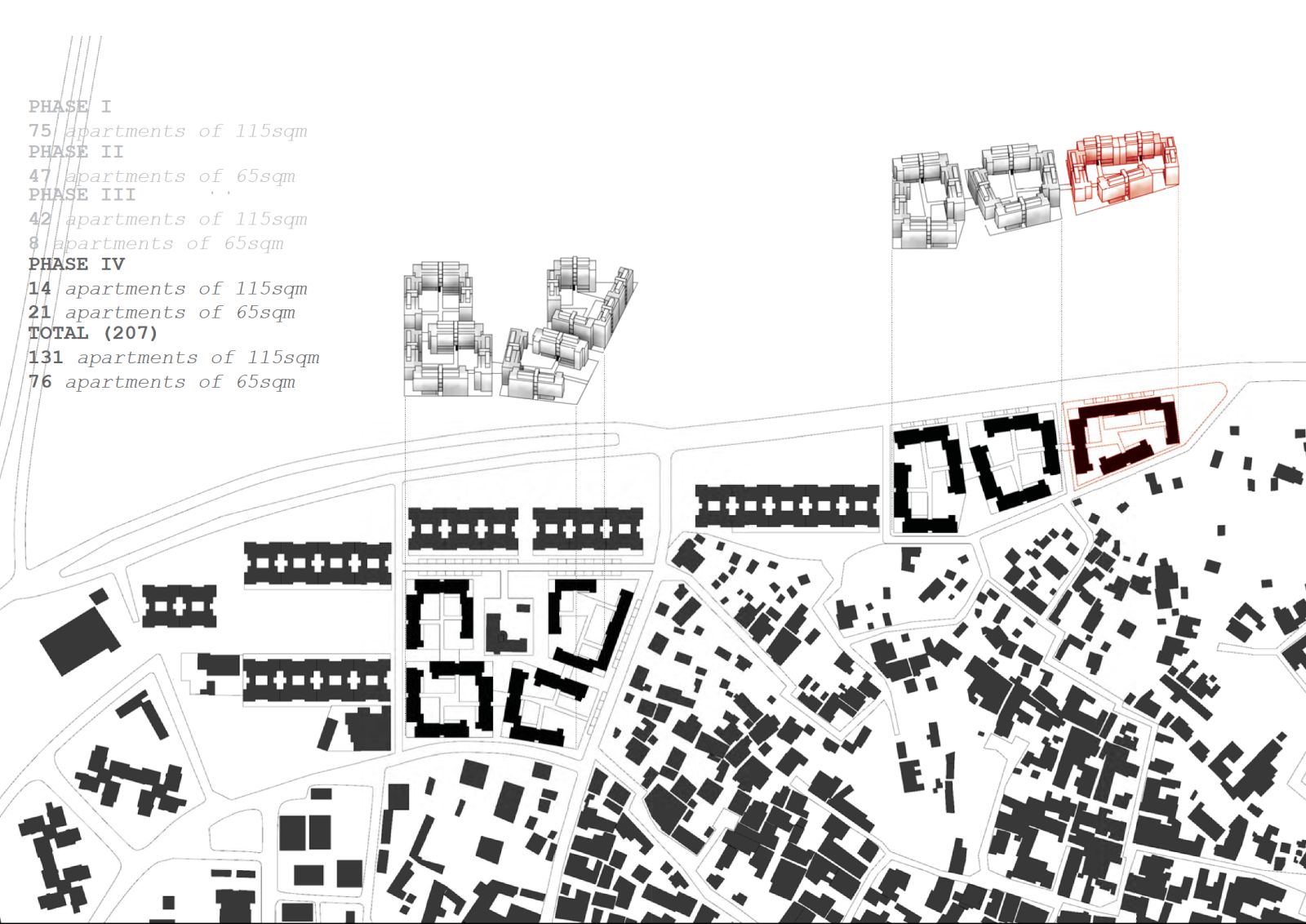
Collective space is a crucial part of the Palestinian culture of resistance. During the First Intifada, the Israelis closed schools and universities, arguing that any place where more than five people could gather had revolutionary potential. In response, places beyond the eyes of the regime and the occupation, private spaces, became public. These places were where decisions were made and a sense of collectivity was maintained. After all, collectivity is not just about big public spaces. Thus, we proposed a series of collective spaces that did not need to be mediated, or taken care of, by the state.
We imagined the design of the ground floor as a common space where rituals such as weddings or funerals could take place, as well as commercial activity. We refrained from overly designing these spaces, from thinking of them as public spaces. Knowing that there will be no public to take care of these common spaces, we offered the possibility for the neighborhood to activate them in different forms of appropriation.
These common spaces differed from public spaces as they could only exist with the active participation of people. They were a contemporary and urban reinterpretation of the hosh, private courts that different families would share in an ongoing organization made of conflict and appropriation. What miraculously still exists in Palestinian society, despite years of ongoing violence and occupation, is a functional social fabric. Rooted in family and tribal connections, this self-regulated form of civil cohabitation and conflict resolution effectively prevents Palestine from descending into civil war like Syria or Iraq. The hosh, or urban islands, as we refer to them, aim to preserve the social fabric necessary for the constitution of a civic space of resistance; fragments of a city that could be formed only after Gaza is liberated from the military occupation and reconnected with the rest of Palestine and the world.
August, 2019
